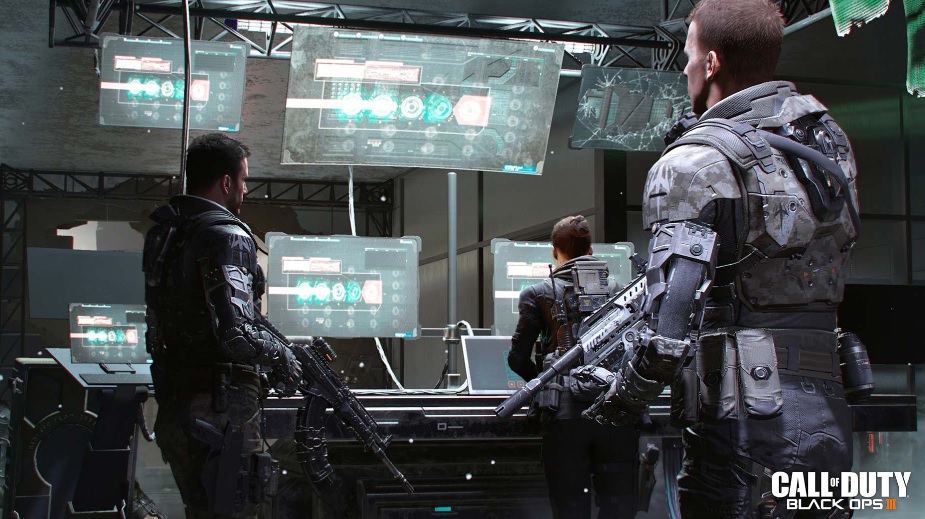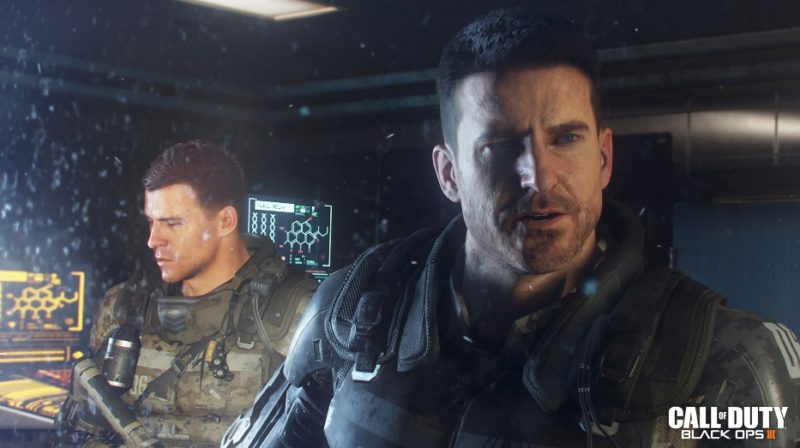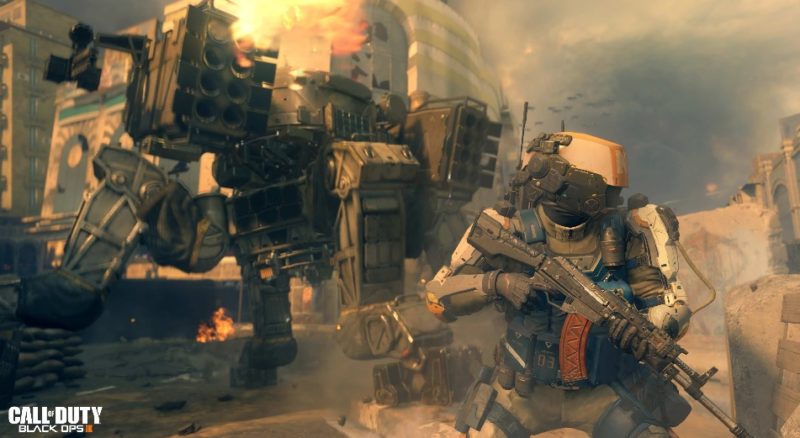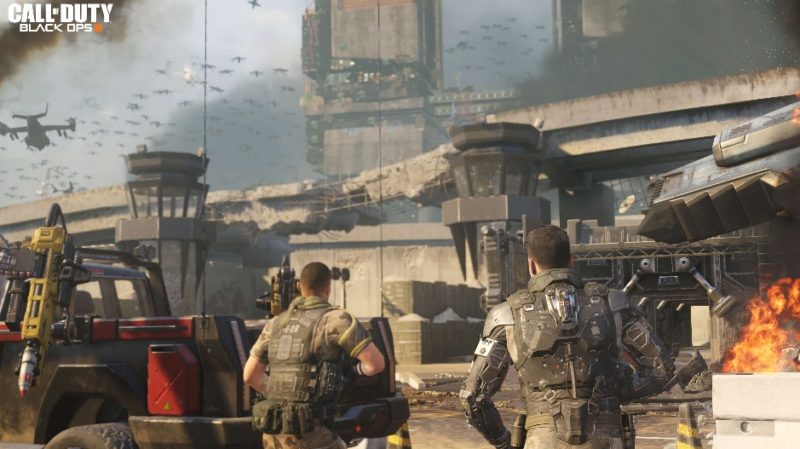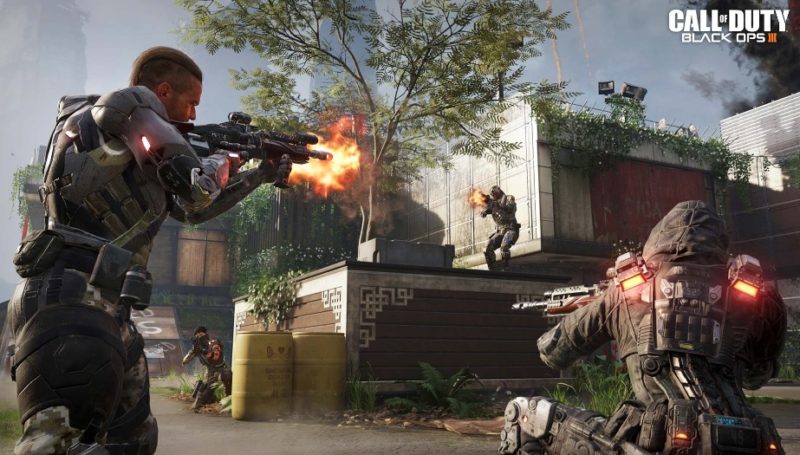TL;DR
Call of Duty: Black Ops III offers a familiar yet refined experience, delving into a dark, dystopian future where human augmentation blurs the lines between soldier and machine. While the campaign explores interesting themes about humanity and technology, its structure and gameplay feel a bit dated despite new mobility features like wall-running and jetpacks. The multiplayer, however, shines with its fast-paced action and enhanced movement, offering a more dynamic experience than the campaign. It's a solid, well-executed Call of Duty entry, but doesn't break significant new ground. Discover if this latest installment is worth your time – read the full review!
New year, new autumn, new Call of Duty. This annual release is a familiar pattern. Since Call of Duty 2 launched as a flagship title for the Xbox 360 (and PC), the series has maintained a consistent presence. Call of Duty‘s ascent from major player to industry titan began with Infinity Ward’s Call of Duty 4 – Modern Warfare. Three years later, Treyarch seized the opportunity. After earlier efforts with Call of Duty 3 (2006) and Call of Duty – World at War (2008), Call of Duty – Black Ops marked their breakthrough. This success stemmed from venturing beyond the well-trodden World War II setting popularized by Infinity Ward, allowing them to establish a distinct identity and inject a more personal style into their Call of Duty installment. Two years later, they released Black Ops 2, and now, after another three-year gap, comes the third installment. This autumn, however, the competition is particularly fierce. Swedish studio Dice and Electronic Arts are launching Star Wars: Battlefront (projected to sell over 10 million copies) almost concurrently with Call of Duty – Black Ops 3. While Dice seemingly has the Force on their side, Treyarch embraced a darker approach years ago. The question is: will the dark side prevail?
“Dark” aptly describes Black Ops III: dark, gritty, and dystopian. The “Black Ops” moniker alludes to clandestine operations, unsanctioned and often conducted behind enemy lines. This theme persists in Black Ops III, but with even higher stakes. A new Cold War has ignited, and the near-future world is a bleak environment, especially for soldiers. The narrative centers on the search for missing comrades and the unraveling of a concealed reality.
Black Ops III explores the intersection of humanity and technology. The pursuit of the ultimate soldier has blurred the lines between man and machine. Enhancements designed to sharpen vision, improve alertness, augment strength, and generally transform soldiers into high-performance warfighters raise critical questions: what is lost in this process? Black Ops III engages with these questions throughout its campaign. While similar themes have been explored in series like Metal Gear Solid and Deus Ex, Black Ops III grounds the concept in a more relatable and fundamental narrative, avoiding the exaggeration of Hideo Kojima or the distant, segregated future of Deus Ex. The theme holds considerable interest and informs new combat mechanics, yet the storytelling could have been more ambitious. The concept remains somewhat in the background, and the game does not delve deeply into the human condition or the ethical implications of technology that alters the human mind – at least not to its full potential.
Despite the game’s leap into the future, the campaign’s structure remains familiar. Black Ops III builds upon the mobility introduced in Advanced Warfare, incorporating wall-running, jetpacks for enhanced verticality, and sliding maneuvers. However, these additions do not significantly alter the core gameplay experience of the Call of Duty campaign. The fundamental formula persists: numerous scripted sequences and largely linear, directed levels. The pacing is well-managed, with levels alternating between stealth sections and larger-scale firefights. The execution is competent, but the overall structure feels well-worn, a result of Activision’s frequent releases. The enhanced mobility occasionally feels tacked-on, reminiscent of Respawn’s Titanfall, but without the degree of integration into the level design. If the environments featured more verticality or if wall-running provided a distinct combat advantage, these features would feel more organic. Currently, they give the impression that Treyarch is drawing inspiration from both Sledgehammer’s previous Call of Duty title and other developers, seeking novelty rather than truly innovating upon a solid foundation.
One notable aspect of the campaign is the ability to play cooperatively with multiple players, a feature likely to be appreciated by many. However, even here, there is untapped potential. Playing through the campaign with others doesn’t drastically differ from previous installments where players operated as a team. Elements such as distinct player roles or segments where players complete individual objectives before regrouping could have elevated the co-op mode. Nevertheless, Treyarch’s current offering is satisfactory. The ability to experience a well-crafted and meticulously directed Call of Duty campaign collaboratively is a significant asset.
The campaign is not the only draw for this major multiplayer title. Players can invest countless hours in Black Ops III‘s multiplayer mode, unlocking new abilities (perks) and classes. The fast-paced action remains a series staple, and the increased mobility can be exploited on the maps in both obvious and subtle ways. The enhanced mobility feels more justified here than in the campaign, although it doesn’t quite reach the level of integration seen in Titanfall (it’s worth noting the irony of the original developers at Respawn now being imitated by the company they once left; imitation is, after all, a form of flattery). Utilizing wall-running to traverse gaps provides a clear advantage in map traversal. While traditional, more stationary playstyles are viable, the intensity and mobility offer new opportunities for aggressive players. Call of Duty’s evolution toward faster, more mobile gameplay distinguishes it from its primary competitor, Dice, and their larger-scale, vehicle-centric multiplayer experiences. While not in the same category as the frenetic gameplay of Quake or Unreal Tournament, and even Halo feels more intense, Call of Duty is moving in that direction.
For newcomers or those returning to Call of Duty multiplayer after a hiatus, the adjustment can be challenging. Whether it’s dealing with quick-scoping snipers or skilled players wielding conventional weapons, not to mention futuristic weaponry like cybernetic fireflies or devastating airstrikes, the learning curve is steep. However, with practice, players adapt to the pace, and their scores gradually improve. Practice yields progress, and successful frags translate to experience points. The familiar progression system of skills and perks is present. While the initial array of soldier configurations and playstyles may seem overwhelming, persistence pays off. Ultimately, technological gadgets and enhancements can only compensate so much against superior opposition, but they can provide a crucial edge in close-quarters engagements. The maps are relatively small and confined, prioritizing focused combat encounters over grand, open-world battles with vehicles. Call of Duty: Black Ops III adheres closely to the core tenets of the multiplayer FPS genre. Those seeking tactical battles demanding methodical gameplay might find Black Ops III less appealing than a “shoot first, ask later” approach. Matches with unknown players can devolve into chaotic rushes into enemy territory, often resulting in swift eliminations. Teamwork significantly enhances the experience, but coordinated teams are not always available. Games like Battlefield more naturally foster team play, with tanks and helicopters serving as common objectives and strategically important locations demanding coordinated defense. This natural team dynamic can be harder to achieve in Call of Duty without active communication or pre-existing partnerships.
A diverse selection of game modes is available, ranging from classic team deathmatch and Free For All to Capture the Flag, Demolition, and Search & Destroy. However, the underlying mechanics remain consistent, and the practical differences between modes are often subtle. The player counts are also relatively modest. Game modes like Search & Destroy, which eliminate respawns, encourage more cautious gameplay reminiscent of Counter-Strike, rewarding tactical decision-making over reckless aggression. This shift in pace is a welcome change.
Call of Duty – Black Ops III does not necessarily lead the market in every aspect. Other titles have pioneered advanced mobility systems and achieved greater graphical fidelity. Treyarch appears to prioritize maintaining smooth performance over pushing graphical boundaries. The PS4 version exhibits a noticeably higher frame rate compared to the Xbox One, maintaining a relatively stable 60fps while the Xbox One fluctuates around 45fps, occasionally dropping to 28fps, representing a significant performance disparity. In this regard, it aligns with traditional Call of Duty priorities. Black Ops III delivers an entertaining experience, even if it lacks the groundbreaking impact of some genre contemporaries. It is a robust and well-executed installment that honors the series’ legacy, offering a campaign that is as meticulously directed and tightly controlled as expected. Therefore, it is difficult to withhold a recommendation, even if it doesn’t break significant new ground; despite the advanced technology, the core gameplay mechanics and structure remain familiar.
Tested version: Xbox One. Please note that the Xbox 360 and Playstation 3 versions differ significantly from those for Xbox One, PC, and Playstation 4.
